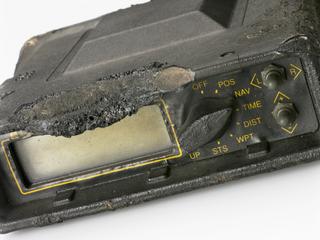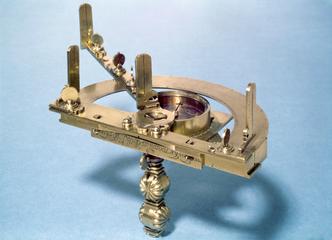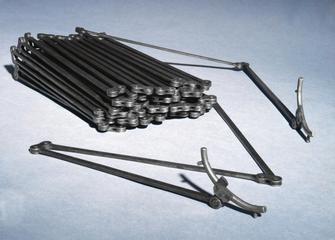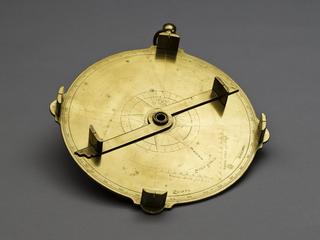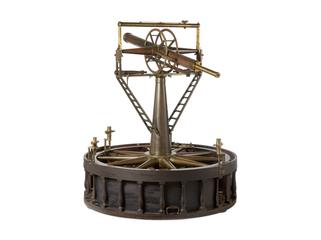
Pedometer, gilded brass and silver
- maker:
- Johann Willebrand



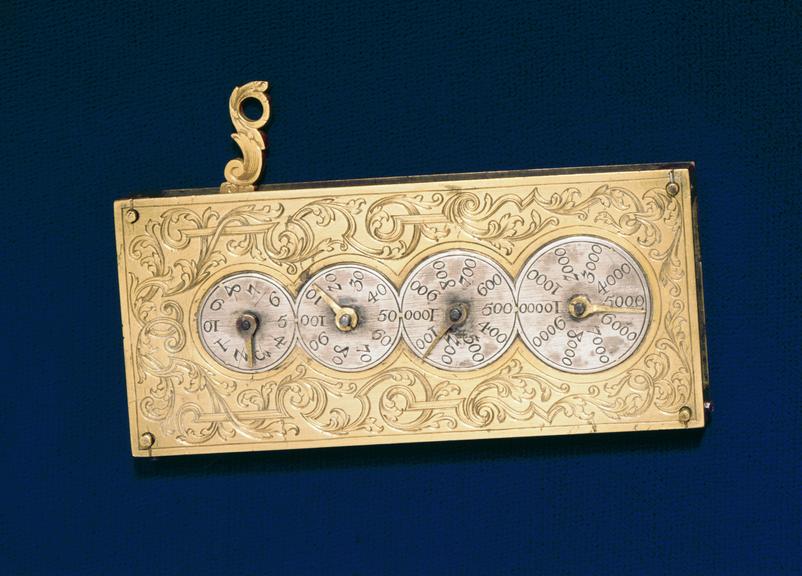
Pedometer, gilded brass and silver, cord operated, by Johann Willebrand, Augsburg, Germany, 1682-1720.
One method of measuring distance is to count the number of paces it takes to walk or run from one place to another. This 18th century gilt, brass and silver pedometer made by Johann Willibrand was worn at the waist and a string tied round the leg moved the mechanism one notch each step.
The following extract is from "A Science Museum illustrated booklet, Surveying: Instruments and Methods" by J. Wartnaby...
Another rough method of measuring distance is by pacing, and again, mechanical devices have been developed to aid the task of counting. In general, these devices are termed pedometers and their invention can be traced to South Germany in the mid-sixteenth century.
The earlier instruments, one of which is illustrated, counted paces but did not provide a direct reading of the distance traversed. This example, made by Johann Willebrand of Augsburg, dates from the early years of the eighteenth century. The instrument was attached to the wearer's belt and a string connected the projecting lever to one of his feet. This lever operated a pawl which caused the lower hand of the instrument to rotate, the corresponding dial registering up to 10 paces. Gearing to successively higher dials allowed recording of up to 100, 1,000, 10,000 paces respectively.
More recent (for 1968) types of pedometer resemble pocket watches and are completely self-contained. They include in their mechanism, a horizontal pendulum free to move in a vertical plane and responsive to the wearer's up-and-down motion resulting from walking. A simple mechanical system converts these oscillations to a direct reading of distance , allowance being made for differences in length of pace.
Details
- Category:
- Surveying
- Object Number:
- 1952-237
- Materials:
- brass (copper, zinc alloy), gilded, iron and silver (metal)
- Measurements:
-
overall: 9 mm x 53 mm x 84 mm, .07kg
- type:
- pedometer
- credit:
- Backer, H.E.
